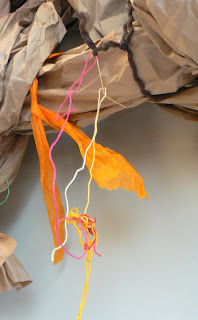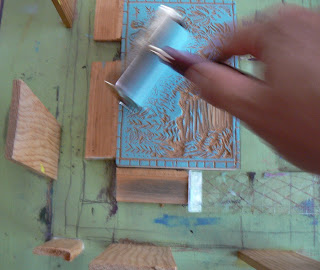Seven participants took part in the activity of discovery this morning. Each were handed trial proofs to study. Their observations were shared with the group.

Click 1 minute video. Participants reported on the paper samples they were handed. Student Maggie saw a person in a forest with green and white colors. Student Linda had a distinctive scene with an ink border. Another saw a field but wondered what the other shapes were about.


Click 1 minute video. Student Dorothy saw three colors on the print she was asked to study. It has yellow, a brown, and turquoise blue, she reported to the group. Student Carl picked out ultramarine blue and an earth green on his sheet.
questioned
compared
listened
wondered
thought about the image,
about the artist notes.
Each took turns
to roll Speedball ink
on the glass palette
and onto a wooden block.
Click 2 minute video.
Click video.
Click on two minute video. Student Grace creates monoprint off an uncut wooden block, while Anna makes tiny cuts on her linoleum block.
Three minute video. Student Sue carefully burnishes the original linocut everyone has practiced digging into on today. Her daughter inks her own.
The next workshop will meet Sunday, September 4th, in the Seward Civic Center Auditorium, beginning at 2 pm. The public is invited free of charge.


































































